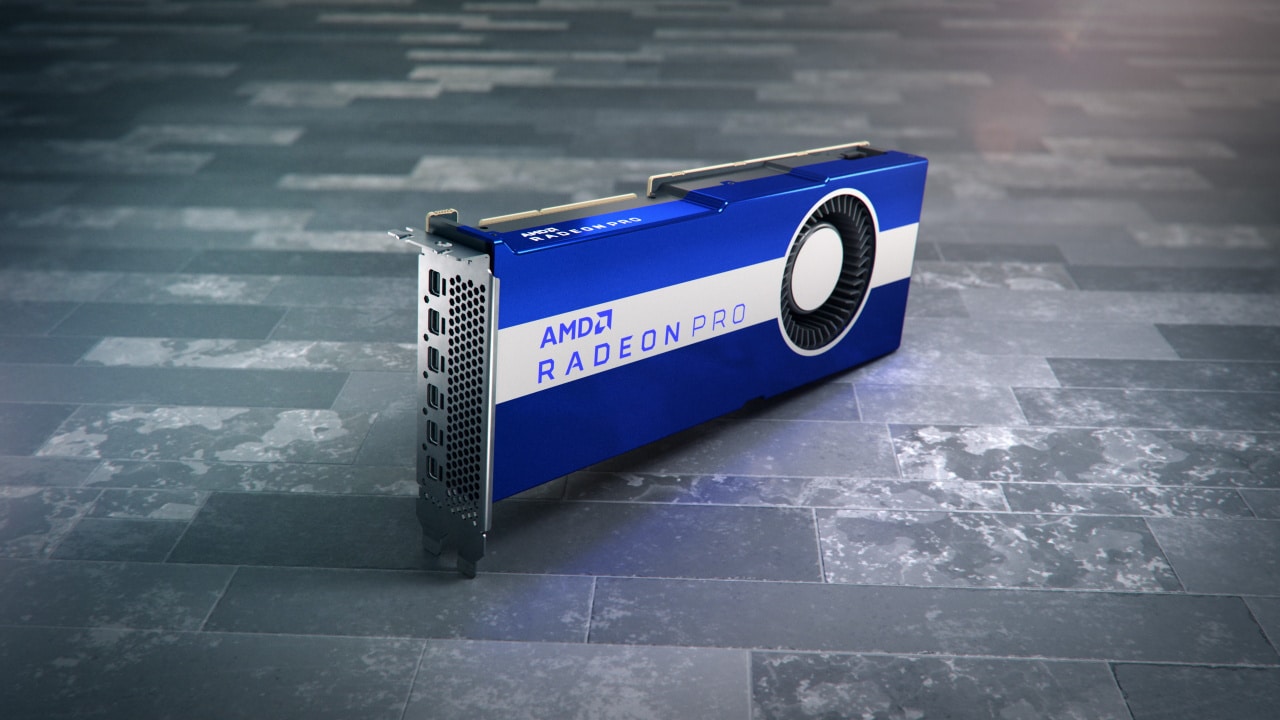At the beginning of last year, AMD introduced the Radeon VII graphics card, which became the first consumer model where the circuit was manufactured on TSMC’s 7-nanometer technology. However, the Radeon VII was basically based on the pure Radeon Instinct Mi50 calculation card, which offered additional functionality in the form of full performance for double-precision calculations and error correction for the graphics memory.
As the Radeon Instinct Mi50 was intended as an “accelerator” card for, for example, machine learning, it completely lacked image outputs and was therefore not suitable for use in professional workstations. For the latter purpose, AMD is now introducing the new Radeon Pro VII model, which carries with it most of the features of the related computing card in the Radeon Instinct family.
Radeon Pro VII is based in many ways on the Vega circuit found in both Radeon VII and Radeon Instinct Mi50. This means a total of 60 active computing units (CU) and 3,840 stream processors. Like the Radeon Instinct model, the circuit is accompanied by 16 GB of HBM2 memory with error correction (ECC) running at 1,000 MHz on a 4,096-bit wide memory bus, giving a total bandwidth of 1 TB / s.
Unlike the Radeon Instinct Mi50, which has no image outputs at all, there are good resources on that front for the Radeon Pro VII. It offers a full six Mini Displayport outputs according to the standard Displayport 1.4, which according to AMD can be used for, for example, screen walls or alternatively operate a single screen in resolutions up to 8K with HDR activated.
The new card is aimed, as the name suggests, at the professional segment, where, among other things, heavy simulations in product design and industry are highlighted as one of the primary areas of use where double-precision calculations (FP64) are widely used. AMD is happy to compare the card with the Nvidia Quadro RTX 5000, which according to the company is both slower and more expensive at this workload.
Furthermore, AMD is pushing hard in the area of professional video editing, and then mainly when working with heavy source material in high resolutions such as 8K. The company’s own measurements once again show a performance advantage for Radeon Pro VII compared to Nvidia’s more expensive model Quadro RTX 5000 when editing 8K-resolved material with the software DaVinci Resolve.
For those who want to increase the computing power and the available amount of memory in the same workstation, two Radeon Pro VII cards can be connected via AMD’s Infinity Fabric Link interface. This allows the graphics circuits to share a common memory pool (a total of 32 GB) while the maximum bandwidth for communication between the circuits is 168 GB / s.
In connection with the unveiling of the new graphics card, AMD is also rolling out a new version of the Radeon Prorender rendering engine. The software can be implemented as a plugin in other software to hardware accelerate selected operations. The new version offers expanded functionality in, among other things, Unreal Engine and Blender and provides support for several graphics cards via Infinity Fabric Link.
Radeon Pro VII is expected to be available in stores during the month of June with a recommended price of USD 1,899 or the equivalent of SEK 23,195 including VAT.
















